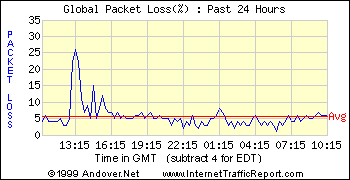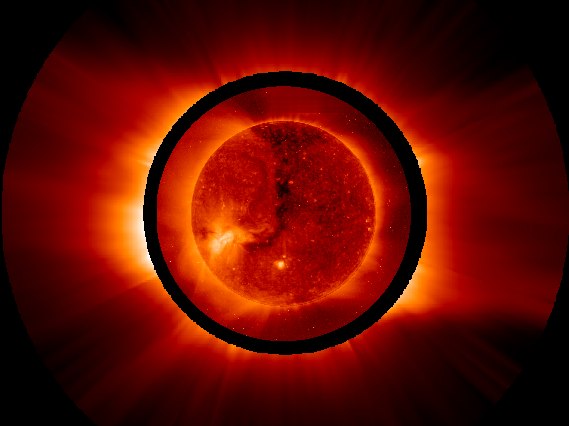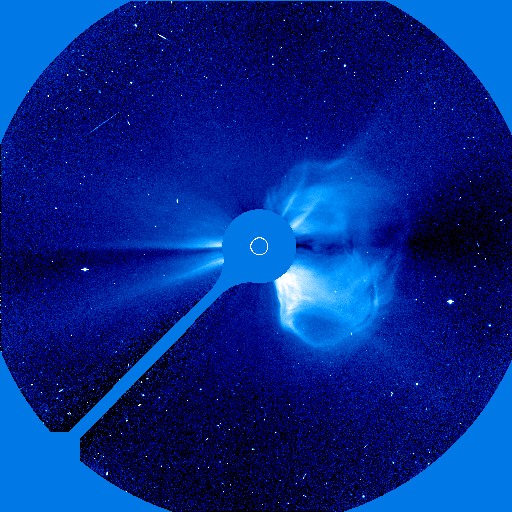|
The last six months have seen astonishing progress towards our goals in realising the Centre for Mathematical Science. On site the holes in the ground of a few months ago have been replaced by the buildings realising the Architects' designs with which we have come so familiar over years of planning. Much landscaping is in place and the grass roof over the Central building seems to he thriving. Rumours that the next series of the Teletubbies is to be filmed there are unfounded (as far as we know).
Just a couple of days before Christmas the first occupants of Pavilion B moved into their new accommodation. Despite a number of teething problems with the lighting systems and the automatic blinds, the new offices and seminar rooms have been very much enjoyed by the theoretical physicists and pure mathematicians established in the. building. Research students in particular have greatly appreciated having a decent amount of space for the first time. Four months later, Pavilion D was ready for ,occupation and members of the Statistical Laboratory now moved into their new home during the Easter vacation. Since May, the Central building (Pavilion A) has also been in use, with light lunches, coffee and soft drinks being available in the Common Room area. Our 'state of the art' computerised building management system (BMS) is still having problems from time to time, but we are hopeful that this will improve in the near future.
The funding situation has also been transformed. The project is to receive £12 million from the Government's Joint Infrastructure Fund. Support has also come from funds made available by the Higher Education Funding Council for England and from Trinity College. Dill Faulkes, who has already given £1 million for the Gatehouse building for the Newton Institute has made a further very generous donation of £2.5 million towards an Institute for Geometry. With additional funding support from our first major donor, Nick Corfield, we are now within £1 million of securing the £55 million needed to complete the whole project.
Congestion Control
I Grant, Faculty of Mathematics |
As everyone knows, the letters WWW stand for 'World Wide Wait'. The phenomenal growth of the internet has resulted in a system which sometimes seems to be on the verge of collapse.
One of the possible scenarios of internet collapse is congestion. When the US Congress's House Judiciary Committee published the Starr report on the afternoon of September 11 1988, the web site www.house.gov was unreachable for most people for two hours. No-one knows how many people's attempts to download the 415 page report failed because of congestion.
Richard Gibbens and Frank Kelly of the University's Statistical Laboratory have been using a mixture of mathematics and experiment to test a novel idea about how congestion on the internet can be controlled.
Gibbens and Kelly's idea is to make a subtle change to the Transmission Control Protocol, or TCP, on which the web - and the internet in general - is based. Because of its diverse nature, introducing changes to the Internet's protocols is a tricky business. The new protocols must maintain compatibility with the existing ones because the technology may take years to filter through to the majority of the computer systems which make up the internet.
When someone clicks on a link on a web page, their web browser sends a request over the internet to another computer somewhere, which responds with the page that the link points to. To achieve this, both the web browser and the web server (which runs on the computer hosting the web site) run TCP software to provide a reliable connection between the two.
The way the TCP protocol works is by splitting the data into packets and sending each packet off to the destination. Packets are identified by a unique sequence number, and when a packet arrives at the destination an acknowledgement is returned, indicating that the packet with the given sequence arrived intact. Often this is not the case: as I write, the Internet Traffic Report (http://www.Internettrafficreport.com/) is showing an average packet loss rate of around 4% over the last 24 hours.
 |
| April 22/3 1999 |
When a computer sending data fails to receive an acknowledgement, it records the loss of a packet and retransmits it. However, if a significant number of packets are lost over a given TCP connection, then the current protocol dictates that the transmitter must 'back off', that is they must retransmit the unacknowledged packets at a slower and slower rate. This is how TCP does congestion control. The net result of congestion is an increase in the number of lost packets (if too much traffic is received at any point on a route from one place to another then the computer there will intentionally discard packets at random). This increased packet loss results in the transmitting machines backing off the connection, which reduces the congestion. Then, once the congestion dies down, the machines slowly increase the rate at which they retransmit data. In this way it is hoped the network bandwidth will be fairly distributed between the different users.
If use of a scarce shared resource is anonymous then it pays for people to use as much of that resource as quickly as possible, unless they trust completely all of the other users of that resource not to do so. This is called 'the tragedy of the commons' and much has been written about it in economic literature. In the present internet, the scarce resource is congestion free connections. In the short term it would pay people to re-program their TCP software to back off just a little less enthusiastically. Then they would obtain a slightly larger share of the bandwidth than those who had not done so. Of course, once this became the norm, the rate of backing off from congestion could be slowed still further until all the congestion control was gone. It is at this point that the internet would start to collapse, maybe.
Gibbens and Kelly's idea to prevent this is to introduce a method whereby transmitting machines are informed of congestion in a way that enables them to attempt to optimise their use of the network. Using game theory, network queuing and experiments they have evidence that with just the addition of a single bit to each TCP acknowledgement, computers using a network can receive enough information about congestion that they can co-operatively optimise the use of the network. In addition, potentially non-co-operative users of a network could be charged for congestion they caused, which would provide the necessary incentive to make optimal use of the available capacity.
The idea is very simple. Whenever a packet is involved in congestion a single bit is set in the acknowledgement. It is then left to the TCP software in the sending machine to decide what to do about the congestion. If it's very important that the data is transmitted rapidly (in the case of live audio data, for example) the sending machine may accept the associated cost of the congestion marks and carry on transmitting at a high speed. If, on the other hand, the data is of a lower priority, say e-mail, then it pays the sender to reduce the rate of transmission to avoid the extra cost.
By allowing this degree of flexibility in the congestion control algorithm (compared with the fixed 'backing off' algorithm the present TCP relies on) the Internet will be able to evolve and adapt to congestion even as the nature of the traffic and the congestion changes.
Getting the Building Built
E Cullinan, Edward Cullinan Architects |
The great Italian architect of the 15th Century, Leon Battista Alberti, said something like "architects should never visit the site of their building during construction, lest sympathy with the problems experienced by the contractor should cause them to water down the purity of their design".
This seldom, probably never, attained ideal could only have been achieved in a world in which the client was a single prince with obedient servants, the architect a deeply determined one-eyed genius with obedient servants, and the system of building construction well understood by all parties carried out by obedient servants, and more or less static in its nature.
Today, more or less determined, more or less one-eyed architects design buildings for many-headed customers whose various heads are also more or less determined, and more or less au fait. And they design them at a time when building technology is changing fast, when complicated services must be gracefully integrated, at a time when energy saving and sustainability are of mounting importance, and at a time when members of the public, and especially the neighbours as well as the local planning committee, are extremely interested in what's going on. Add to this the fact that the Centre for Mathematical Sciences is not a single building but a complex composition of different buildings, and it becomes clear that these buildings will demand a lot of explanation and development while they are under construction. So we do site visits at least once a week to aid the builders and (Alberti notwithstanding) to assuage our longing to see the things grow out of the muddy ground.
"We do site visits" allows me to dispel the myth that architects, Alberti-like, consist only of the name on top of the headed notepaper. The "we" means that my partner Carol Costello is looking after the whole of Phase I which started building on August 10th 1998 and is on time to be finished on February 14th 2000: that with her, my partner Steven Western has special responsibility for the central building, containing laboratories, lecture halls and seminar rooms beneath combination room, caf‚, bar and suchlike: and my partner James Roach for Pavilions One and Two which will make up the Marit and Hans Rausing Building for the Institute of Cosmology and Theoretical Physics, for Pavilion Five, and for Pavilion Three which has recently been added to the programme and must now be stitched into the building process. The "we" also means Dinah Bornat, who is leading our team on the detailed design of the Betty and Gordon Moore Science and Technology Library, and Wen Quek who is doing the same for the Faulkes Gatehouse: both of these will start building on January 4th 2000. Leading, co-ordinating, inspiring and reacting to all these individuals is my partner, Johnny Winter, who has worked with me on the design, detailing and execution of this great project since the day when we first sat down with Peter Goddard and Peter Landshoff to begin to plan the future.
It may seem unfair that I have not outlined the responsibilities of individual members of Laings, the Contractor's team; nor those of the engineers, quantity surveyors or project managers: but I hope that my explanation of the roles of the members of my team of architects will suffice to give a taste of the work involved in causing a useful, graceful building to come into being. It certainly involves more than a thousand people.
The Solar and Heliospheric Observatory
Helen Mason, Assistant Director of Research, DAMTP |
On 11th August, 1999, the UK experienced one of nature's most spectacular events, a total eclipse of the Sun. Unfortunately, the British weather was not as kind as it could have been. However, a few of us were lucky enough to see the total eclipse on Alderney, in the Channel Islands. During a total eclipse, the visible light from the surface of the Sun, the photosphere, is blocked out by the moon. The bright ring of light, which extends around the black disk, comes from the Sun's atmosphere, the solar corona. The temperature of the photosphere is only about 6000 degrees, but the solar corona is staggeringly hot, over one million degrees. One of the major goals of solar research is to understand why the solar corona is so hot. The spectacular images and data obtained from the Solar and Heliospheric Observatory, SOHO, have provided some important clues.
 |
| The Sun's outer atmosphere as it appears in ultraviolet light. This image was taken by two instruments (UVCS, outer region, and EIT, inner region) aboard the SOHO spacecraft. |
SOHO, an ESA/NASA mission, was launched on 2nd December 1995. It is in orbit around the Sun at one million miles from Earth. From this vantage point, SOHO can monitor the Sun continuously for 24 hours per day. It carries a suite of instruments, designed to study the solar interior, the solar atmosphere and the solar wind. Images, movies and details can be found on: http://sohowww.nascom.nasa.gov/
With co-investigator status on SOHO, scientists from the Department of Applied Mathematics and Theoretical Physics have played a key role in the planning and analysis of observations, together with theoretical modelling of the solar plasma.
The Sun looks very different in the ultraviolet wavelength range. This montage of images shows the gas at a temperature of one million degrees. The dark region extending from the north pole past the equator is a very large coronal hole. This is the source of the solar wind, which flows out continuously from the solar surface.
From SOHO observations, it is now evident that the interaction between the magnetic field and the hot electrified gas plays an important role in heating the solar atmosphere. The small scale magnetic field on the solar surface changes completely every 48 hours. Energy is stored in the magnetic fields and is transferred into thermal and kinetic energy when the magnetic field re-configures.
This can happen gradually or very suddenly, producing explosions called solar flares. During a solar flare, the temperature can exceed 10,000,000 degrees.
 |
| Image of a large plasma cloud exploding outwards from the Sun. This image was created using an artificial eclipse instrument called LASCO onborad on the SOHO spacecraft. The actual size of the Sun itself is shown as the white circle in the middle of the image |
This is an image in visible light obtained with a coronagraph on SOHO. It shows bursts of material (each one about a thousand million tons), which are ejected from the solar surface at speeds of up to 300,000 miles/hour. These explosions of gas can reach far out into space and impinge on the Earth's environment, causing problems with satellites, communications and power grids. The Sun will be very active over the next few years and solar explosions will be prevalent, so watch out for space weather forecasts.
The Sun is an ideal medium for exploring physics - energy, gravity, magnetism, electricity, light, sound etc. Scientists at DAMTP helped to provide an educational web site for the 1999 eclipse: http://www.sunblock99.org.uk
This has now received over one million hits and is being developed as a classroom resource for teachers and school children, called SolarMax. Each section is introduced by young solar researchers from the UK. It is hoped that their enthusiasm for science will be infectious.
When Sir Isaac Newton was a young man, he bought a triangular glass prism in a local market. He was fascinated by light and used this prism to split a beam of sunlight into its constituent colours. Little did he know, that his meticulous studies of the 'Phenomenon of Colours', would form the foundation of modern spectroscopy, and allow us to view the Sun and many other astrophysical objects at wavelengths, far beyond the end of rainbow.
|
Click here for the previous issue of Asymptopia
If you would like to receive notice when the next issue is published, please send your email address to P.V.Landshoff@damtp.cam.ac.uk
|

